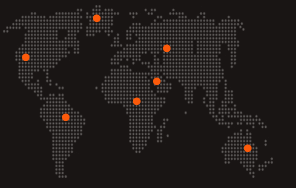Derniers développements: En avril 2, L'administration Trump a officiellement mis en œuvre le “tarif réverse complet” politique, imposant un 10% Tarif de base sur presque toutes les marchandises exportées aux États-Unis, et prélever des tarifs supplémentaires sur des partenaires commerciaux tels que la Chine, l'Union européenne, et Asean (Le plus élevé de Chine est 104%, et la moyenne de l’ASEAN est 33%)18. Cette politique a provoqué des chocs dans le système commercial mondial, et les sociétés de commerce extérieur sont confrontées à de graves défis!
Impact de base:
1️⃣ La différenciation de l'industrie s'est intensifiée:
Des zones à frapper: Électronique, textiles et vêtements, Photovoltaïque et les nouvelles exportations de véhicules énergétiques sont les premières à porter le poids! The United States is China’s largest textile export market, and the risk of order loss for small and medium-sized enterprises has increased; Southeast Asia’s re-export trade channels have been blocked, and corporate profit margins have been further compressed127.
Dramatic changes in cross-border e-commerce: Starting from May 2, China’s tax-free policy for small packages exported to the United States has ended. Platforms such as Shein and Temu are facing a surge in customs clearance costs, or are forced to turn to overseas warehouses to stock up or raise prices26.
2️⃣ Supply chain pressure increases sharply:
Companies that rely on the US market need to face rising costs (such as raw materials and logistics costs), and some orders have been canceled or transferred to non-US markets17.
Southeast Asian factory-building companies have suffered a “second blow”, with tax rates in Vietnam and Cambodia as high as 46%-49%, and traditional re-export routes have failed12.
Countermeasures:
✅ Market diversification: Accelerate the development of non-US markets such as the EU, the Middle East, and Africa to reduce single dependence! Although ASEAN has high tax rates, there is still potential for demand in emerging markets15.
✅ Supply chain adjustment: Optimize the layout of overseas warehouses, explore factories in Mexico, Latin America and other regions, and avoid tariff barriers27.
✅ Policy dividends: The National Development and Reform Commission has launched corporate assistance and studied precise measures such as tax exemption and subsidies; les “green channel” of the domestic demand market helps digest inventory, and export-to-domestic sales has become a new direction14.
Future outlook:
Short-term pain is inevitable, mais sur le long terme, tariffs force industrial upgrading! Semiconductors, high-end manufacturing, and independent controllable fields may usher in structural opportunities45. As the global supply chain is reshaped, flexibility and resilience will be the key to companies’ breakthrough!
#Foreign Trade Dynamics #Tariff Impact #Supply Chain Change #Market Diversification


